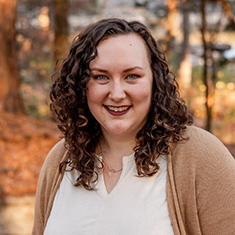More than 30 countries in the Americas have reported Zika virus infections, with up to 4 million people projected to be infected in 2016. The mosquito-borne virus has now also been linked to sexual transmission, causing public health experts to predict that the virus could spread locally in the United States and elsewhere. U.S. agencies are responding quickly, prompted by the Level 1 alert issued by the Centers for Disease Control and Prevention’s emergency control unit.
A Level 1 call to action was last declared in 2014 in response to the Ebola outbreak in West Africa, when only a handful infected people journeyed outside the affected countries. While they differ in terms of transmission (human vs. mosquito) and health impacts (hemorrhagic fever vs. birth defects), the Ebola and Zika outbreaks—and others, such as avian influenza—confirm the need for countries to be ready to contain pandemic threats.

The international community has already scaled up a response to Zika. In May 2015, the Pan American Health Organization issued an alert with the first confirmed infection in Brazil; in February 2016, the World Health Organization (WHO) declared Zika a public health emergency of international concern.
The Playbook
While it is a big job to operationalize local and national preparedness platforms, the playbook for doing so already exists. DAI’s experience suggests that domestic and international stakeholders, including in the United States, should take the following actions to help contain Zika:
Convene key stakeholders. Zika demands a comprehensive response. Convening stakeholders from government, communities, academia, and the private sector—across the health, environment, and finance sectors—can help communities learn about the virus and its risk and prepare together.
Build municipal capacity. Individuals and municipalities are the first line of defense. To identify, prevent, and mitigate Zika’s spread, municipalities need planning tools that connect vector control, community awareness, and personal protection. Municipalities vary in resources and capabilities, but each can build capacity and leadership by assessing resources, planning, conducting simulation exercises, and building linkages with key partners and support systems.
Share data and evidence rapidly. Accurate, timely, and readily shared data—on the locations of outbreaks, community contacts, civil and emergency responders, even weather forecasts—is critical to a coordinated Zika response. To tie local activities to integrated national response programs, local responders must share data between neighboring areas through existing platforms and regional and national hubs.
Strengthen health systems. Because Zika infection during pregnancy can cause microcephaly and other disorders in babies, health systems must act to reduce the incidence of infection among pregnant women and women of childbearing age, as well as build case management systems that identify patients and provide long-term developmental assistance to affected babies and their families.
Control mosquitos. As Zika is transmitted to humans by the Aedes aegypti mosquito, integrated control measures—such as concentrated spraying in Zika hot zones and eradication of mosquito breeding habitats—are essential.
The Zika outbreak also provides an opportunity to reinforce existing prevention and preparedness mechanisms and coordination across sectors.

Since 2006, the U.S. Agency for International Development (USAID) and DAI have led global initiatives against pandemic threats and outbreaks. In 2010, for example, a USAID/DAI project—Community-Based Avian Influenza Control—was credited with reducing avian influenza risk in Indonesia. DAI is currently leading USAID’s Emerging Pandemic Threats program, Preparedness and Response (P&R), which is working with 20 countries to design and implement plans against outbreaks and public health emergencies.
Importantly, P&R addresses the practical and contextual issues confronting individual governments as they strive to cope with the unique human, financial, and logistical challenges they face in disease preparedness and response.

DAI has also implemented USAID’s Stamping Out Pandemic and Avian Influenza (STOP-AI) and RESPOND programs that built country capacity and regional networks. We understand that the threat of Zika and other pandemics requires immediate, coordinated, and comprehensive action. DAI has helped establish institutional capacity frameworks that strengthen national health platforms by:
Developing municipal planning tools for preparedness, including a toolkit called “Leadership During a Pandemic: What Your Municipality Can Do,” that help localities prepare multisector operating plans.
Integrating data on climate monitoring, surveillance, and early warning with health data, such as environmental monitoring systems developed for monitoring climate variability and change in Central America.
Leading simulation and planning activities that bring together key stakeholders across sectors to prepare for environmental and health threats.
Designing public health emergency frameworks in collaboration with the WHO to help countries review their preparedness and disease surveillance and response systems and identify gaps and priorities.
Strengthening case management systems for birth defect monitoring and long-term disability cases.
Containing and mitigating Zika will entail a long, disciplined, and systematic campaign built around investing in local and national public health emergency preparedness frameworks, building the long-term capacity of local partners, and capturing and applying lessons learned from previous pandemics. We know many of those lessons already; the time to apply them is now.




